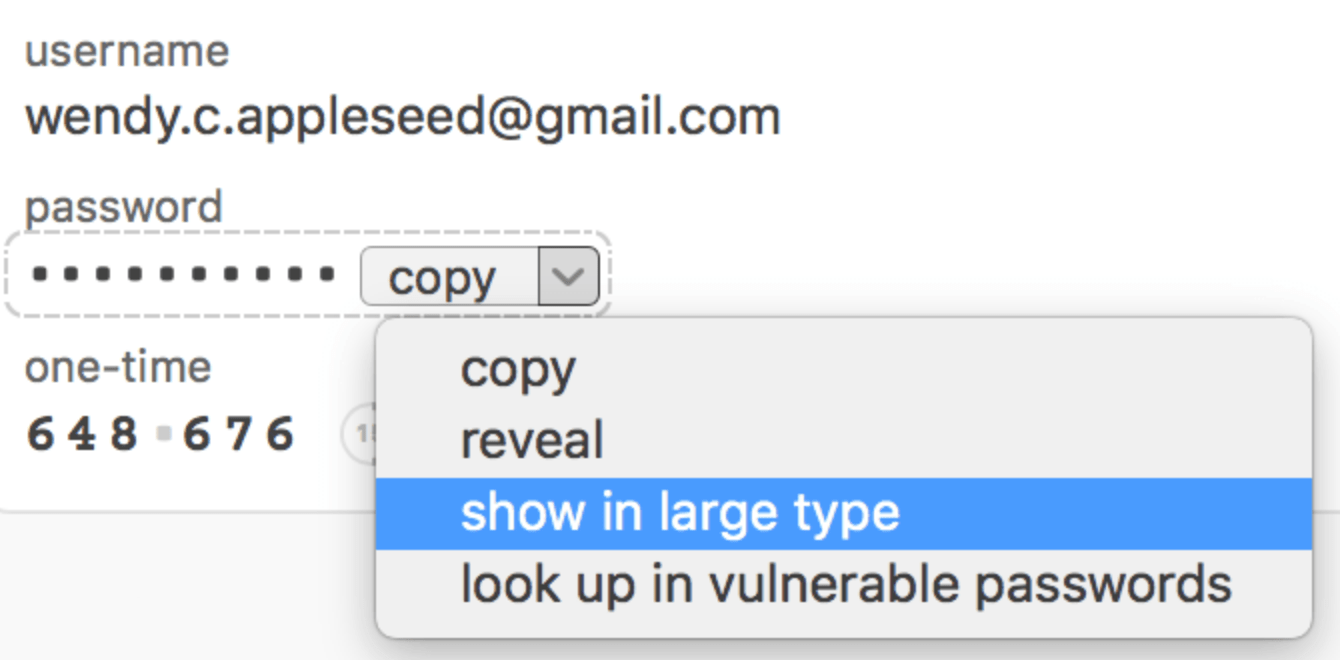
In the sheet that appears, click Delete References. It should appear as an empty box, indicating that it’s missing from the Keychains folder. Now launch Keychain Access and select the login item that appears in the Keychains pane.
One password for mac mac#
Locate the login.keychain file and drag it to a safe place on your Mac (the Documents folder, for example). A Keychains folder containing your personal keychains will open. To do that, move to the Finder, select Go > Go to Folder, and enter ~/Library/Keychains.

To begin that process, we’ll make a copy of the old keychain for safekeeping, in case you remember its password we’ll remove it from Keychain Access and then we’ll create a new login keychain that you’ll use in the future. Unless you can recall your password, you’re out of luck and must start over. While not the most modern encryption scheme, it’s quite secure for everyday users-in this case, you. Apple uses the Triple Digital Encryption Security standard (3DES) to secure the keychain. You’ve changed the login keychain’s password and, regrettably, forgotten the new password. Click Save to implement the selected options. Additionally, enable the Lock When Sleeping option, and your keychain locks when your Mac goes to sleep (when you close your MacBook’s lid, for example). If an application needs access to your keychain after that limit has expired, you’ll be prompted for your login keychain password. If you choose the first option and configure it to read something like 5 minutes, your keychain will lock if it hasn’t been accessed in the last five minutes. The sheet that appears shows two options: ‘Lock After X Minutes of Inactivity’ and ‘Lock When Sleeping’. To do that, launch Keychain Access, select your login keychain, and choose Edit > Change Settings for Keychain “login”. You can add a level of security that auto-locks your keychain. Auto-lock the keychainīy default, once you’ve logged in, your keychain will be unlocked, which isn’t terribly secure if others can access your Mac when you’re not around. As long as you’re logged in, you shouldn’t be troubled for that password again. Do this, log out of your account and then back in when the Mac needs to use one of the passwords stored in the login keychain, you’ll be prompted to enter it. You’ll be prompted to enter your current password (the one you now use for your user account) and then enter and verify a new password. In Keychain Access select the login keychain and choose Edit > Change Password For Keychain “login”. Enter that and click Allow, and the password will be revealed in the Password field. You’ll be prompted for the password for the login keychain.

In the resulting window, enable the Show Password option. IDG Double-click a keychain item to locate the Show Password option.

To learn the identity of a password, select All Items or Passwords in the Category pane, then find the the item you want the password for and double-click it. For example, if you’ve forgotten a password and would like to recover it, Keychain Access is the place to go. Keychain Access can do several useful things. Except in the case of certificates, you can double-click on one of these items to open a window where you can view the item’s attributes-name, kind, associated account, location (a website or network address)-as well as its access control (meaning the applications and services allowed to access the item). The largest pane, to the right, displays the contents of selected category items-for example, all of the items that have a password associated with them. Here you can choose to view specific kinds of things stored in the keychain-passwords, secure notes, certificates associated with your account, encryption keys, and certificates used broadly by your Mac. The top-left pane lists keychains accessible to you. Launch Keychain Access, and you’ll see that the window is divided into three panes. Thankfully, the contents of these various keychain files are combined into Keychain Access, so that you needn’t worry about where they’re held. The Mac places keychain files in multiple locations-/System/Library/Keychains, /Library/Keychains, and youruserfolder/Library/Keychains.


 0 kommentar(er)
0 kommentar(er)
